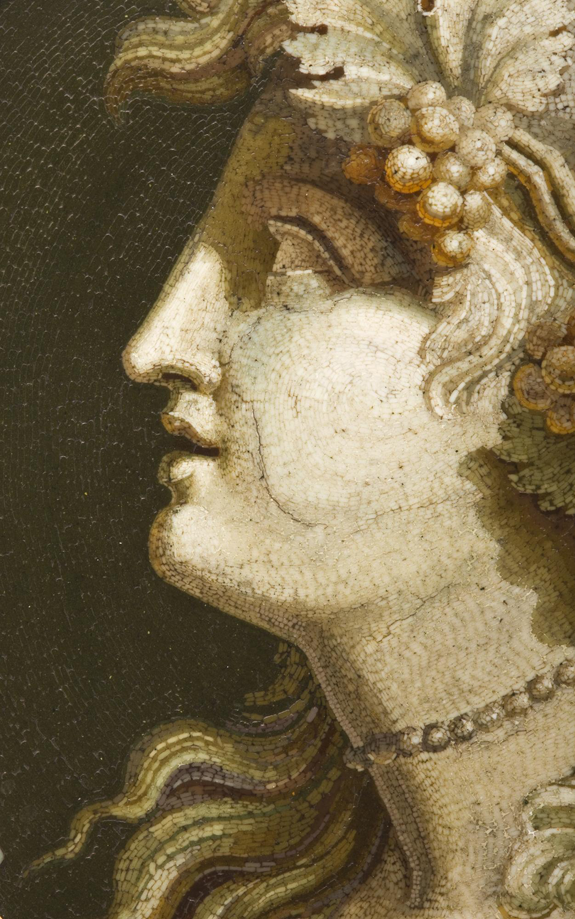Micromosaics

It is fitting that the term “micromosaics” was coined by Sir Arthur Gilbert, who put together one of the largest collections of its kind. At first glance, the designs on the micromosaic objects appear to be painted or enameled. However, closer inspection reveals that the figures, landscapes, and decorative motifs are composed with thousands of tiny glass pieces in myriad hues, known as tesserae. The technique derives from ancient Roman floor and wall mosaics, and it continued to develop in the ornamentation of Byzantine churches, as well as in the decorative program of St. Peter’s Basilica in Rome and St. Mark’s Basilica in Venice. The invention of micromosaics dates to 1775, and some of the finest examples contain more than five thousand tesserae per square inch.
Traditionally hailed as one of the finest extant examples of micromosaic, this bonbonnière features the virtuoso work of mosaicist Clemente Ciuli, mounted in a gold box by renowned French goldsmith Adrien-Jean-Maximilien Vachette. Part of the Gilbert Collection of decorative arts, the bonbonnière is a gift to LACMA from Lady Marjorie Gilbert, wife of Sir Arthur Gilbert, in honor of Arthur’s birthday, May 16. This is one of two micromosaics from the Gilbert Collection believed to have been selected by sculptor Antonio Canova for presentation to Napoleon from Pope Pius VII during his attendance at Napoleon’s coronation in 1804. While visiting London in 1971, Sir Arthur saw the bonbonnière at Garrards & Co., the Crown Jewelers. Thinking it was a miniature enamel portrait, Gilbert was astonished to discover that it was a micromosaic, composed of an estimated 1,500 tiny glass tesserae per square inch. Sir Arthur himself coined the name “micromosaic” and amassed one of the largest collections of these objects during his lifetime. The bonbonnière was one of Gilbert’s most treasured acquisitions, kept in his possession until his death.
While earlier mosaics were made of larger pieces of stone or glass, the infinitesimal pieces used for intricate micromosaics are achieved by creating thin strips or threads of glass, known as smalti filati, which are cut into tesserae. The bonbonnière, featuring a profile bust of Bacchus, the Roman god of wine, is an exquisitely rendered masterpiece belonging to a rare group of micromosaics that endeavor to emulate the appearance of marble sculptures. Similar to composing a grisaille drawing, Ciuli used dark tesserae to delineate the contours and graded tones of tesserae to evoke contrasting shadows and highlights.
Image: Adrien-Jean Maximilien Vachette, Clemente Ciuli, Bonbonnière with Micromosaic Depicting a Profile Head of Bacchus, micromosaic 1804, box 1809/1819, gift of Lady Marjorie Gilbert in honor of Arthur Gilbert's Birthday